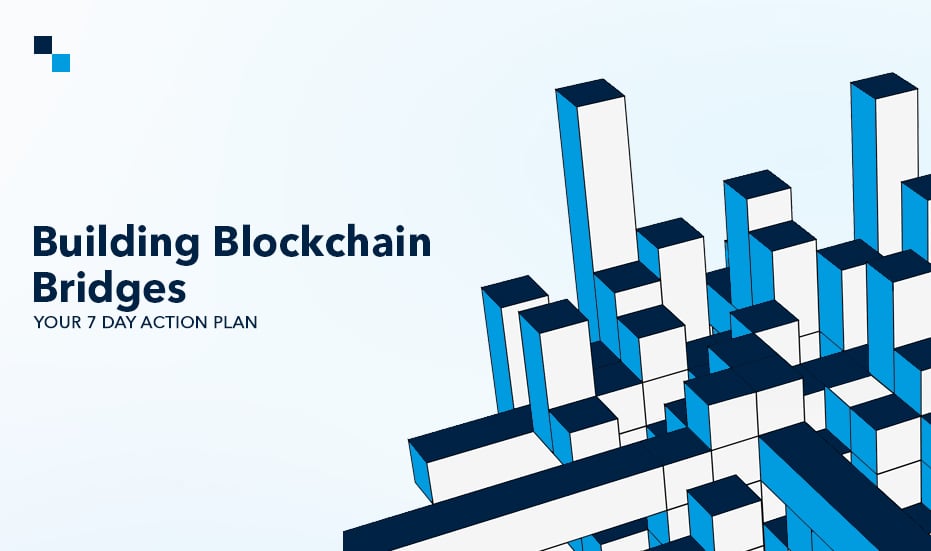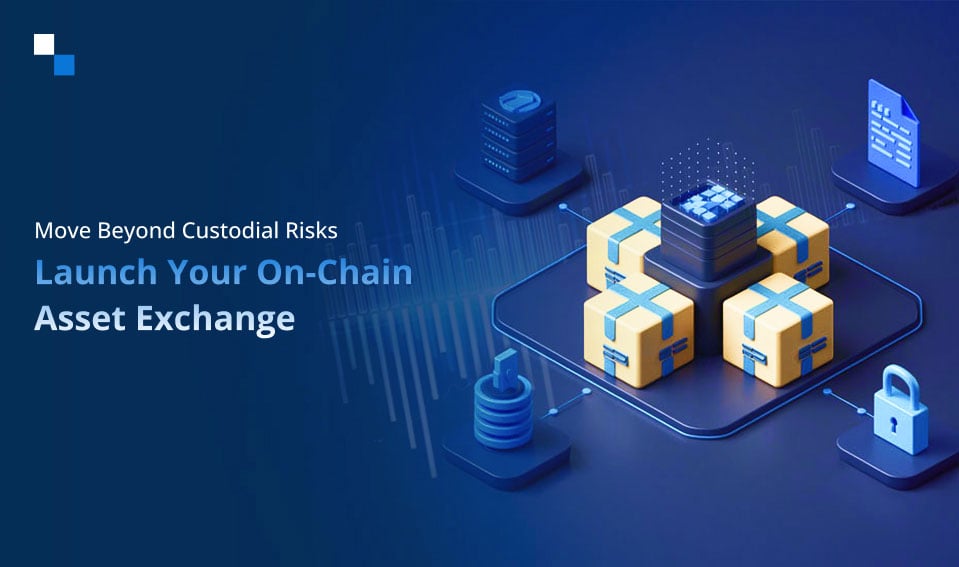
A Step-by-Step Procedure to Building dApps on Avalanche Blockchain
September 30, 2024Is Pixleverse NFT Worth the Hype?
October 1, 2024When Bitcoin and Ethereum blazed the trail and hit the mainstream, no one could ever think that the decentralized world they created could accommodate players that would outdo them. Once monopolists, these players couldn’t reach their peak due to speed, scalability, high costs, etc. Many Layer 1 and Layer 2 blockchains took advantage of the opportunity and emerged to address these issues. This gave rise to a more diverse and fragmented blockchain ecosystem.
The next big thing was cross-chain bridge development solutions that enabled users and businesses to navigate the multi-chain universe. These decentralized applications are designed to facilitate the frictionless movement of assets and information across prominent blockchain networks. Without much ado, let’s unveil how businesses can benefit from Multi-chain Bridge Platform Development.
Table of Contents:
What are Cross-chain Bridge Platform Solutions?
How Do Cross-Chain Bridges Work?
Key Benefits of a Multi-chain Bridge Platform Development
Who Can Benefit from Cross-chain Bridge Development Solutions?
Cross-chain Bridge Platform Solutions: A Brief Explainer
What are Cross-chain Bridge Platform Solutions?
A cross-chain bridge consists of smart contracts, protocols or other mechanisms that allows two or more distinct blockchain networks to communicate. Like real-world bridges, this bridge enables the transfer of assets or data between chains, overcoming the barriers of siloed blockchains.
A world without these interoperability solutions would feel like a metropolitan city with a lot of places to go but no means to commute. With multi-chain bridge platform development, the multiple blockchain networks’ existence makes more sense as users can execute fund transfers, lending, swapping, staking, deposits, etc. seamlessly across various isolated blockchains.
How Do Cross-Chain Bridges Work?
Cross-chain bridges essentially work by locking/burning tokens from one (source) blockchain and unlocking/issuing equivalent wrapped versions of these assets on another (target) network. This “wrapped” token represents the original asset and can be redeemed or swapped back at any time.

This process can be customized to include multiple chains, leveraging smart contracts, validators, and decentralized protocols.
To understand the detailed workings of these interoperability solutions, it is essential to understand the following terms:
- Bridging Mechanism:
Cross-chain bridge platform solutions leverage smart contracts, oracles, and other protocols to facilitate the transfer of assets/data across multiple blockchain platforms.
- Native Bridge Tokens:
A native token plays a pivotal role in the bridging process. It represents the transferred value and is leveraged as collateral, securing the bridge and ensuring the transaction’s integrity.
- Consensus Mechanism:
Cross-chain bridge development solutions mostly leverage consensus mechanisms such as threshold signatures, multi-signature wallets, or others to ensure the validity of transactions across various chains.
- Validators or Relayers:
Validators or relayers verify transactions and maintain consensus across the participating networks. They can be independent entities paid for their participation or trusted third-party validators.
- Decentralized Oracles:
Advanced cross-chain bridge platform solutions harness decentralized oracles to obtain real-time information from external blockchain networks or off-chain sources to facilitate cross-chain data or asset transfers.
- Asset Locking and Unlocking:
The asset transfer across different blockchain platforms through these interoperability solutions often involves locking the assets on the source blockchain and unlocking them (wrapped versions) on the target chain, ensuring process security and integrity.
- Governance and Security Models:
Cross-chain bridge development solutions may be integrated with governance models where participants vote on proposals determining the bridge’s operation. Cross-chain bridges are the honeypots for hackers so security measures such as audits, bug bounties, and code reviews are indispensable to ensure their trustworthiness.
- User Experience:
Users directly engage with cross-chain bridge platforms to transfer assets between blockchains. So, cross-chain bridge development company must meticulously create user-friendly interfaces to provide seamless access to notifications, transaction records, etc.
Why Launch Your Cross-Chain Bridge Platform Solution?
Key Benefits of a Multi-chain Bridge Platform Development
1. Interoperability: A cross-chain bridge eliminates the need for users to interact with each blockchain network separately, creating an interconnected ecosystem.
2. Enhanced Liquidity: Bridges allow users to move assets between networks, unlocking liquidity pools and reducing market fragmentation.
3. DeFi Expansion: Cross-chain bridge development solutions enable decentralized finance (DeFi) protocols to expand across multiple blockchains, bringing more opportunities for yield farming, staking, and lending.
4. Cost Efficiency: Users can leverage cross-chain solutions to transfer assets to networks with lower fees and faster transactions.
Who Can Benefit from Cross-chain Bridge Development Solutions?
1. Decentralized Finance (DeFi) Projects: DeFi platforms benefit from a cross-chain bridge by expanding to multiple networks, reaching more users, and leveraging different blockchain features.
2. Crypto Exchanges: Centralized and decentralized exchanges can enhance their user experience by providing cross-chain swaps, allowing users to trade across multiple blockchains seamlessly.
3. NFT Marketplaces: Cross-chain bridge platform solutions enable NFTs to be traded across different networks, enhancing market reach and liquidity.
4. dApps: Decentralized applications can integrate cross-chain functionality to attract users from various networks and provide more flexible and efficient services.
5. Gaming Platforms: Blockchain games can integrate cross-chain bridges to allow users to move in-game assets across networks, creating a more dynamic gaming ecosystem.
6. Institutional Investors: Institutions looking to diversify their digital asset portfolio across different networks can benefit from the liquidity and interoperability offered by multi-chain bridge platform development solutions.
7-Day Multi-chain Bridge Platform Development Plan

Day 0: Market Research and Outline Planning
- Identify the target chains you want to bridge (e.g., Ethereum, Binance Smart Chain, Solana).
- Determine the use case for your bridge. Elucidate whether you want it to focus on token transfers, data sharing, or asset interoperability.
- Analyze your competitors carefully. Study other cross-chain solutions, their models and develop your own unique selling proposition.
- Find cross-chain bridge development company with sufficient experience in building cutting-edge interoperability solutions.
- Select a bridge protocol. You may choose between native bridges (like Polkadot) or independent solutions (like AnySwap, ChainBridge, or RenBridge).
- Brainstorm with your technology provider and outline how smart contracts will interact between the selected blockchains.
Day 1,2: Smart Contract Development and Customization
- At this phase, your cross-chain bridge development company will start building the core smart contract that will manage the bridge logic, lock tokens and mint wrapped assets.
- Collaborate with your technology provider to pick the best-suited decentralization mechanism. You can choose validator nodes or multi-signature wallet mechanisms for decentralized bridge governance.
Day 3,4: Security Audits and Testing
- At this stage cross-chain bridge development solutions provider performs rigorous smart contract audits: They may engage a third-party auditor or their best smart contract audit teams to review the bridge smart contracts.
- Perform punctilious penetration testing. Get involved with your technology provider while they test for vulnerabilities, especially around locking/unlocking mechanisms and cross-chain transfers.

Day 5: UI/UX Development
- Invest generously in user interface design. Coordinate with cross-chain bridge development company to develop a simple and intuitive interface for users to interact with the bridge.
- Ensure that the technology partners optimize the user experience through seamless integration of wallets like MetaMask, Trust Wallet, or WalletConnect.
Day 6: Integration and Final Testings
- Now is the bridging phase when source chains are linked with the target chains. The connection is finalized after comprehensive component development and integration. At this stage, the cross-chain bridge are also integrated with intended dApps (as per requirements).
- Coordinate with multi-chain bridge platform development company to test the bridge under a real-world simulation. This stage involves conducting test transfers across the bridge in a controlled environment to ensure efficient functionality.
Day 7: Mainnet Deployment and Go-Live
- Finally the cross-chain bridge development company deploys the bridge smart contracts on the mainnet of the selected blockchains.
White-Label Cross-chain Bridge Development Solutions Costs
Launching a cross-chain bridge involves several cost factors:
- Development Costs: Creating smart contracts and backend infrastructure.
- Security Audits: Vital for the safety of users’ assets.
- Infrastructure Costs: Hosting and server management to run validator nodes or decentralized mechanisms.
- Marketing and Go-Live Costs: Outreach to attract users and liquidity providers to your bridge.
A white-label cross-chain bridge development solution can significantly reduce these costs by providing ready-to-deploy infrastructure that is customizable for your needs. This speeds up deployment, ensuring a fast go-to-market strategy.
How Antier Can Help Launch A Cross-chain Bridge Platform in 7 Days
As the crptosphere goes vast, the demand for interoperability and cross-chain communication is going to increase significantly. If you wish to benefit from the traction these Cross-chain Bridge Platform Solutions are receiving, you can leverage Antier’s state-of-the-art blockchain bridging protocol that can be customized to your purpose and branding needs.
Being a leading cross-chain bridge development company, we specialize in blockchain solutions and can help you launch a cross-chain bridge in just 7 days. Our white-label interoperability offerings give access to a pre-built, customizable solution that integrates the latest technologies and security measures, ensuring your bridge is robust and ready to handle high-volume transactions.
Our expertise in multi-chain bridge platform development solutions, smart contract development, and DeFi infrastructure makes us the ideal partner to bring your cross-chain vision to life. Whether you’re looking to boost liquidity, enhance DeFi offerings, or enable seamless asset transfers, Antier has the tools and expertise to accelerate your cross-chain bridge development.
Let us help you unlock the future of blockchain interoperability.




